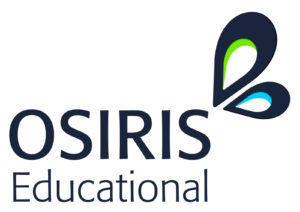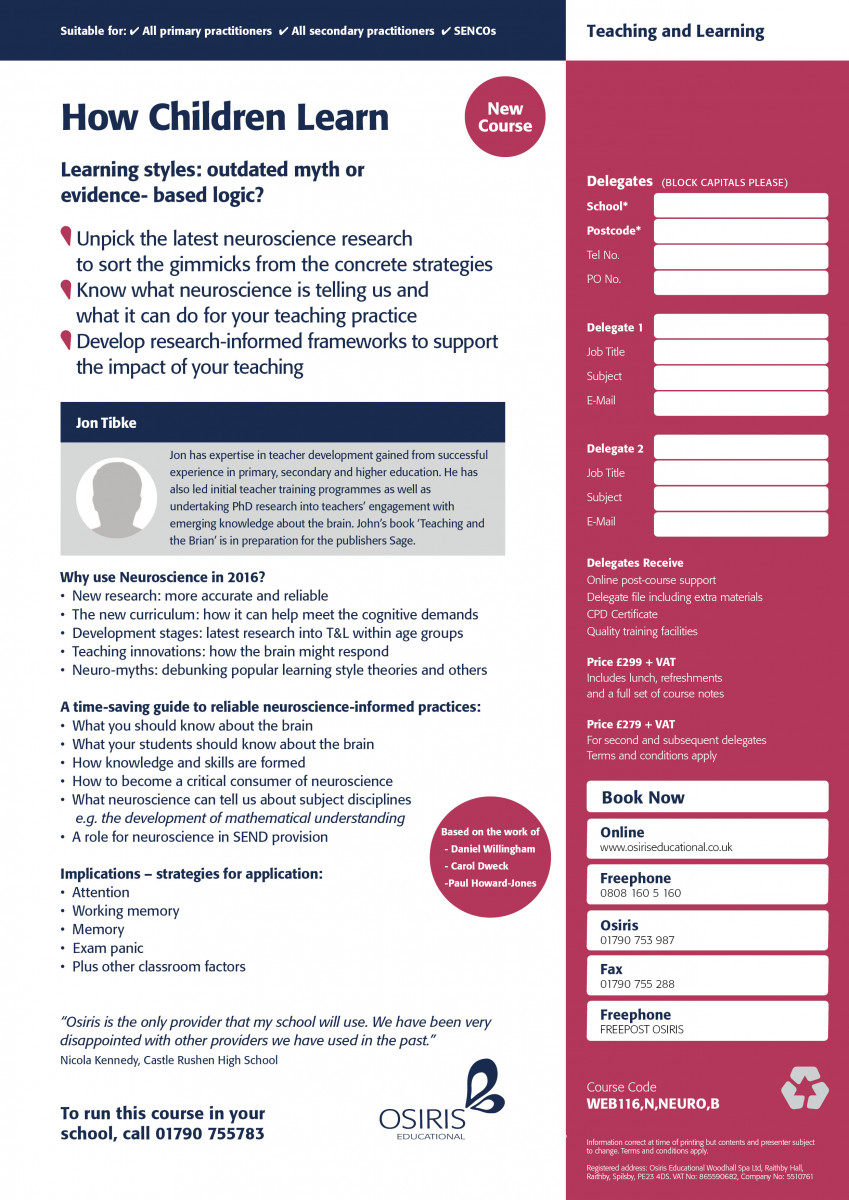How Children Learn
Learning styles: outdated myth or evidence-based logic?
- Unpick the latest neuroscience research to sort the gimmicks from the concrete strategies
- Know what neuroscience is telling us and what it can do for your teaching practice
- Develop research-informed frameworks to support the impact of your teaching
- Based on the work of Daniel Willingham, Carol Dweck, and Paul Howard-Jones
Share this with a colleague:
Description
Why use Neuroscience in 2016?
New research: more accurate and reliable
The new curriculum: how it can help meet the cognitive demands
Development stages: latest research into T&L within age groups
Teaching innovations: how the brain might respond
Neuro-myths: debunking popular learning style theories and others
A time-saving guide to reliable neuroscience-informed practices:
What you should know about the brain
What your students should know about the brain
How knowledge and skills are formed
How to become a critical consumer of neuroscience
What neuroscience can tell us about subject disciplines, e.g. the development of mathematical understanding
A role for neuroscience in SEND provision
Implications – strategies for application:
-
Attention
-
Working memory
-
Memory
-
Exam panic
-
Plus other classroom factors
brochures
Additional information
| Course Type | Teaching & Learning |
|---|---|
| Job Title | |
| Key Stage | Key Stage 1, Key Stage 2, Key Stage 3, Key Stage 4, Key Stage 5 |


